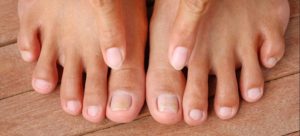Healthy feet and ankles give us the freedom to not just complete our daily tasks with ease, but to pursue our interests and hobbies with fervor. The team at Foot & Ankle Surgical Associates (FASA) continues their mission to improve the quality of life for all members of our community by offering best care advice to our local dancers and their families.
There are many reasons why we dance, whether for fun, for health or for performance. Dance can be ceremonial, competitive or just an unforgettable social experience. Whether you are young or old, experienced or just beginning, FASA wants to keep your feet and ankles strong and healthy, and in good working order. Dr. Kevin Lind, DPM, FACFAS, helps us understand not only how to identify and care for suspected injuries in the feet and ankles, but how to prevent future injury as well.
Foot and Ankle Injuries Common among Dancers All forms of dancing are naturally hard on the lower extremities. Repetition, the root of every overuse injury, is required to  learn new steps and sequences and commit them to muscle memory. Dancing also pushes our bodies to expand their range and definition of normal movement. Sometimes the speed of transitions between these movements can lead to unexpected injury.
learn new steps and sequences and commit them to muscle memory. Dancing also pushes our bodies to expand their range and definition of normal movement. Sometimes the speed of transitions between these movements can lead to unexpected injury.
“Over 50 percent of dance injuries occur in the foot and ankle,” says Lind. “The severity of the damage is determined by a patient’s age, strength and flexibility and the type of shoes worn when dancing.”
Briella, a daughter of a staff member at Foot & Ankle, at her first recital. —>
According to Dr. Lind, the most common injuries incurred by dancers include:
-
Stress Fractures:
hairline breaks in the bone, the result of repeated jumping and landing
-
Foot Neuromas:
thickening of the nerve tissue in the ball of the foot that leads to painful irritation of the nerves, often resulting from repetitive pivoting
-
Shin Splints:
pain and swelling in the front of the lower legs, which develop and are aggravated by recurring activities, such as dancing
-
Tendonitis:
inflammation of the tendons in the foot and ankle, often the result of over exertion
-
Corns, Calluses or Blisters:
all of which are painful skin irritations that occur when anything (usually your shoes) repeatedly rubs the skin of your foot
Dancers can also experience sudden, acute injuries due to falls, impact with other dancers or props on stage or from a chronic injury that has been left untreated.
Who is at Risk?
Risk of injury is increased for new and younger dancers who spend the majority of their practice time learning unfamiliar routines, steps, and movements. However, all dancers are susceptible to injury due to the nature of the sport. Dancing challenges both our aerobic limits and muscular strength, which lead to fatigue. When you are tired, technique and posture are impacted. When your form fails, the possibility of injury increases. Dancers unfamiliar with their personal level of fitness are also at in increased risk of injury. Over-training or moving on to advanced steps before the basics have been mastered can be detrimental to a dancer’s progress.
What to Do if you Suspect an Injury
When injuries occur or are suspected, prompt medical attention by a foot and ankle surgeon can make all the difference in promoting proper rehabilitation. “Most dance injuries can be treated with conservative care as long as they are addressed early and not ignored,” Lind says. “Many people dispel foot pain if they can walk on the foot, but it is important to remember it is possible to walk on a seriously injured foot. Plus, common injuries, if left untreated, may require surgical intervention to ensure proper healing.”
Follow these steps if you suspect an injury while dancing:
- Stop
- Inform Your Instructor or Lead Member (If you have one.)
- Call Your Doctor
While many soft tissue injuries, such as sprains, strains and bruises, can be treated with rest, ice, compression and elevation, simple first aid measures won’t always be enough. A FASA specialist can offer a proper diagnosis and plan of treatment specific to your individual needs. They will be able to determine whether you can dance through your injury with modifications or if time off is necessary for complete healing.
How to Prevent Injury Now and in the Future
Hunter started with Princess dance when she was 2 and has done ballet, tap, jazz, hip hop and tumbling.“The best defense to injury is prevention,” Lind shares. “Dancers should wear appropriate shoes to properly support their feet and ankles as well as perform dance moves with their individual skill levels in mind.”
Other practices to prevent injury include:
- Allow your feet and ankles to prepare for dance with gentle stretches and movements as part of both a warm-up and cool-down routine.
- Listen to and request input from your instructors and more experienced dancers who can help you examine your form, posture and technique to minimize opportunities for injury.
- Rest between sessions, especially if you are new. Keeping your entire body in its best shape and resting muscles will allow them to better work and avoid unnecessary strain on your feet and ankles.
- Stay hydrated before, during and after you dance. Your body cannot perform its best if you aren’t hydrated. Water keeps your joints healthy and increases your endurance.
The collective knowledge and experience of the physicians and staff at Foot and Ankle Surgical Associates makes them an easy choice for care if you or your little dancer are impacted by injury. However, if you haven’t worked with FASA before, what will stand out the most is their team. Every member is committed to investing their time, energy and whole hearts into offering patient care that exceeds our expectations. And, FASA has made accessing great care convenient with community clinics across the South Sound in Centralia, Olympia, Tumwater, Tacoma and Yelm.
Article Written by: Jessie Sordahl
See Original Article Here!
Schedule An Appointment




